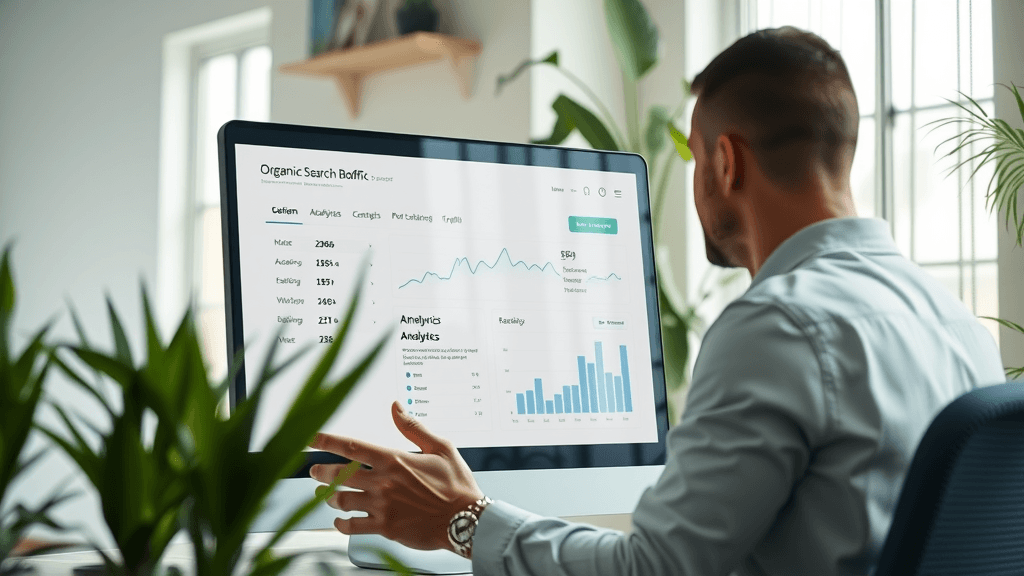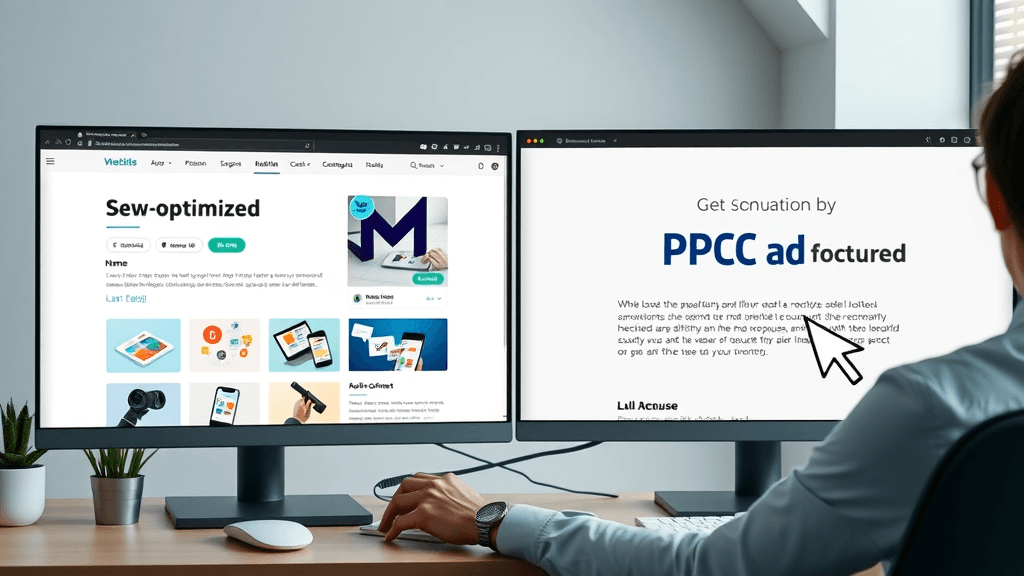Did you know? Nearly 90% of patients searching for Botox begin their journey online, yet only half ever click on a sponsored Google ad. The competition for visibility is fierce, making the battle between SEO vs PPC Botox one of the most crucial decisions a medspa owner can make. In today’s digital-first world, understanding how organic search and paid ads shape your growth could spell the difference between full appointment books and an empty waiting room.
Startling Botox Marketing Facts: Why SEO vs PPC Matters
For medspa owners, rising above local competition is no longer optional—it’s necessary for survival. Studies show that 77% of people researching aesthetic services trust organic listings more than paid ads. Yet, when a new Botox service launches, PPC ads often secure the first bookings. Understanding whether to invest in SEO (Search Engine Optimization) or fast-track with PPC (Pay-Per-Click) advertising is vital. Each route offers benefits and challenges, but the right balance means achieving sustainable growth while capturing immediate leads. With Google Ads targeting intent-driven traffic and SEO building long-term credibility, the core question is: Which strategy fits your current goals and resources?

What You’ll Learn About SEO vs PPC Botox Strategies
- Key distinctions between SEO vs PPC for Botox promotions
- How SEO and PPC each drive organic traffic and paid ads results
- The role of digital marketing channels such as Google Ads and organic search
- Actionable guidance for medspa business growth
Defining SEO vs PPC Botox: Essential Concepts for Medspas
What is SEO in Digital Marketing for Botox?
SEO, or Search Engine Optimization, is all about making your medspa website the go-to result for people searching “Botox near me” or “best Botox clinics.” SEO uses keywords, local business directories, content, and technical improvements so your site appears naturally (organically) on search engine results pages (SERPs). For Botox, this means optimizing for both local and service-specific queries to drive more organic traffic—those free clicks when someone finds you on their own. A strong SEO strategy leads to better search engine ranking, making you a local authority over the long run, even when you’re not paying for a top spot.
Effective SEO strategies for medspa Botox promotions include publishing educational blog posts, earning backlinks from health and beauty websites, and ensuring your site loads quickly on both desktop and mobile. Google looks for trusted content and a positive user experience, rewarding you with higher rankings. This approach is crucial for building credibility, reducing long-term ad costs, and making sure your brand consistently shows up on searches tied to potential patient conversion. SEO builds a sustainable lead funnel over time, which is especially valuable for highly competitive markets like medical aesthetics.

What is PPC in Digital Marketing for Botox?
PPC, or Pay-Per-Click advertising, means you pay for every click your ad receives—typically on platforms like Google Ads or social media. These paid ads appear at the top of search results pages, often above organic listings. For medspas, PPC gives instant access to highly targeted exposure, especially when introducing new Botox services or running special promotions. With PPC, you control your ad copy, budget, keywords, and target audience. This strategy delivers fast visibility, allowing you to direct leads to specialized landing pages optimized for conversions.
Medspa owners often use PPC ads to fill appointment slots quickly or test offers before committing to long-term content creation. While effective for immediate results, PPC can be costly if campaigns aren’t carefully managed. Compliance with Google Ads policies for medical services, smart bid strategies, and ongoing ad optimizations are vital for success. It’s important to remember that once your budget runs out, so does your visibility—unlike SEO, which keeps paying dividends long after the initial effort.
SEO vs PPC Botox: Comparing Benefits and Limitations
| Criteria | SEO Botox (Organic Search) | PPC Botox (Google Ads/Paid Ads) |
|---|---|---|
| Cost | Investment in time, content, and optimization; ongoing but not per click | Pays for every click; variable monthly expense based on bids and competition |
| Speed | Takes months for visible results, but benefits are long-lasting | Instant visibility on search engine results pages (SERPs) |
| ROI | Often higher in the long run due to cumulative organic traffic | Fast returns possible; might be costly if not managed well |
| Scalability | Effort increases with competition; can sustain wider service areas with more content | Easy to scale instantly by increasing budget, but costs rise accordingly |
| Targeting | Targets location and intent through content and local SEO | Targets by demographics, interests, time of day, and device; highly customizable |
| Compliance | Must follow general Google guidelines for health content | Strict ad policies for medical keywords and claims; may require certification |
Digital Marketing Impact for Medspas: SEO and PPC Botox in Action
How Organic Search Supports Botox Promotions
Organic search is a game-changer for medspas aiming to become trusted community leaders. Ranking high on search engine results pages creates visibility without the ongoing expense of PPC ads, building your audience organically. Patients searching for Botox often do their research before booking, so your well-optimized content, FAQs, and genuine reviews help boost trust, credibility, and the likelihood of conversion. Consistently showing up in organic search means you attract new patients even when not running paid ads, fostering a loyal repeat customer base and maximizing your ROI in the long run.
Local SEO techniques, such as optimizing Google Business Profile listings, sourcing citations from health directories, and earning positive reviews, all strengthen your search engine ranking. Combining these efforts with educational blog articles and before/after galleries showcases your expertise. Over time, organic search brings compounding results—your site builds authority, climbing higher in search engine ranking and signaling both relevance and reliability to potential patients.
Driving Botox Leads with Paid Ads and Google Ads
PPC advertising makes your medspa visible to patients actively searching for Botox, even if your site is new. Google Ads allows you to bid on specific keywords (“Botox appointment near me”) and display your offers at the very top of search results pages. For medspas needing quick lead generation, PPC is ideal: you can test ad copy, measure response instantly, and direct users to a focused landing page tailored for conversions. PPC campaigns are highly targeted, letting you reach people by zip code, device, or even past online behavior, optimizing every dollar spent.
The downside? PPC ads and Google Ads can become expensive in competitive markets, especially for high-traffic keywords. Medspas must monitor campaigns closely to avoid wasted spend and handle compliance—Google restricts certain healthcare and medical claims, and your ads need clear calls to action. Still, when executed well, PPC campaigns propel your Botox services ahead of competitors, delivering immediate inquiries that help fill appointment slots fast.

SEO vs PPC Botox Use Cases: When to Use Each For Your Medspa
- Launching a new Botox service: Use Google Ads (PPC) first for quick leads, then invest in SEO for sustainable long-term growth.
- Establishing local authority: Focus on SEO and organic search—become the most trusted result for “Botox near me.”
- Seasonal promotions: Leverage PPC for instant exposure; maintain SEO for consistent relevance and ongoing discovery.
Landing Pages: Optimizing for SEO vs PPC Botox Success
Whether you’re focusing on SEO or PPC, an effective landing page is where online interest turns into scheduled appointments. SEO-optimized pages answer common questions, feature patient testimonials, and are loaded with trust signals to satisfy both Google and careful searchers. Conversely, landing pages for PPC are purpose-built for conversions: clear calls-to-action (“Book Now!”), before/after images, and special offer highlights tailored to the ad copy driving each click.
For best results, review analytics to understand which content keeps visitors engaged, revise headlines with strong Botox keywords, and streamline forms to reduce friction. Regularly updating your landing pages keeps both patients and search engines happy, especially if you’re running multi-channel campaigns across social media and Google Ads. Strategic testing of both SEO and PPC-optimized layouts will reveal the best approach for your medspa’s unique audience and geographic region.

Incorporating Social Media with SEO vs PPC Botox
Social media is the bridge between discovery and decision for medspa Botox services. A solid digital marketing strategy will integrate social media with both SEO and paid ads. Organic posts showcase your clinic, highlight educational content, and reinforce your expertise shown on search engine results pages. Paid campaigns on platforms like Facebook and Instagram attract fresh leads and retarget site visitors with offers. By encouraging shares, reviews, and social proof, you amplify both SEO authority and PPC campaign reach.
Pairing social media contests, live Q&A sessions, or educational videos with targeted paid ads drives engagement and bolsters conversions from your landing pages. By syncing your content calendar and keyword approach across networks, you ensure a cohesive message that meets potential patients wherever they are online. This combined approach multiplies your clinic’s visibility, turning curious browsers into loyal clients.

People Also Ask: What is SEO vs PPC?
SEO means optimizing your medspa’s website to appear naturally in search engine results—no payment required for clicks. PPC means paying for those top spots on Google or social media. SEO’s strength is building long-term authority and free website traffic, while PPC is great for instant, targeted results, especially for short-term promotions or new service launches.
People Also Ask: Is PPC Harder Than SEO?
PPC can be easier to launch quickly but is often harder to master for steady profit. Managing PPC ads involves daily budget, keyword, and ad copy tweaks, plus compliance—one wrong move can waste your spend. SEO is slower but builds up over time, delivering free organic traffic once your campaigns gain traction, but requires patience and ongoing content improvements.
People Also Ask: What is PPC vs SEO vs SEM?
SEO is organic website optimization. PPC is paid advertising, usually via Google Ads and display networks. SEM (Search Engine Marketing) is the umbrella term that includes both SEO and PPC—meaning any digital marketing aimed at improving your visibility on search engines involves a mix of natural and paid strategies.
People Also Ask: What is the ROI of SEO vs PPC?
SEO often has a higher ROI in the long run, since you don’t pay for each visitor—your investment in content and site optimization compounds over time. PPC delivers immediate returns but can be costly if not carefully managed: once ads stop, so does the traffic. Combining both maximizes short-term wins and long-term value for your medspa’s marketing strategy.
SEO vs PPC Botox: Medspa Owner Quotes and Insights
“We saw a 40% increase in Botox consultations using Google Ads, but long-term bookings came from local SEO.” – Dr. Evelyn Tran, Medspa Owner

Key Takeaways: Choosing Between SEO vs PPC Botox for Growth
- SEO builds lasting organic traffic and credibility for Botox services.
- PPC delivers fast visibility through Google Ads and paid ads.
- An integrated digital marketing approach maximizes medspa results.
- Landing page optimization is critical in both strategies.
- Pick the right mix based on goals, timing, and budget.
FAQs: Everything Medspas Need to Know About SEO vs PPC Botox
- How do I get started with SEO for Botox promotions?
Begin by researching keywords your patients use (“Botox near me”), optimize your website and Google Business Profile, and create useful blog content. Earning local citations and positive reviews will strengthen your organic search ranking. - What’s a good PPC budget for Botox ads?
Start small—$500–$1,000 per month—to test which keywords and ad copy convert best. Scale up your budget only after tracking results and refining your PPC campaigns. - Can SEO and PPC be combined for greater effect?
Absolutely. Running both means you cover all bases: instant leads from PPC and authority-building from SEO. Insights from each channel can optimize your entire digital marketing strategy. - How do Google Ads restrictions influence Botox ad campaigns?
Google has strict rules for medical services—ads must not exaggerate results or make unsubstantiated claims. Work with a marketing agency familiar with health compliance to avoid rejected ads and wasted budget.
Conclusion: Navigating the Future of SEO vs PPC Botox Success
Choosing between SEO and PPC for Botox comes down to your medspa’s current needs and future vision. A blended approach ensures quick wins and lasting brand authority—plan both to maximize appointments and clinic growth!
Understanding the nuances between SEO and PPC is crucial for medspa owners aiming to effectively promote Botox services. The article “SEO vs PPC for Med Spas: Where Should You Invest Your Budget” provides a comprehensive comparison, highlighting factors such as speed to results, cost structures, and long-term ROI. It emphasizes that while SEO builds lasting organic traffic and credibility, PPC offers immediate visibility and lead generation. (rankandrejuvenate.com)
Additionally, “Understanding the Role of SEO and PPC in Attracting New Clients for Med Spas” delves into how PPC can rapidly increase bookings by targeting specific demographics and search behaviors, whereas SEO focuses on building a trustworthy online presence over time. (simbo.ai)
For medspa owners seeking to balance immediate client acquisition with sustainable growth, these resources offer valuable insights into crafting a strategic marketing approach that leverages both SEO and PPC effectively.







